Type Commuter/suburban rail Status Proposed | Number of tracks 2 | |
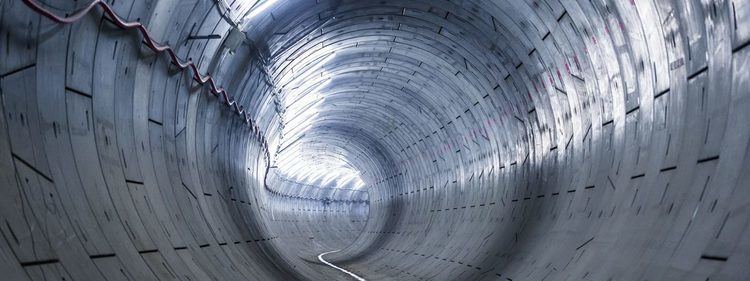 | ||
Track gauge 1,435 mm (4 ft 8 ⁄2 in) standard gauge Electrification 25 kV 50 Hz AC (Overhead line) Owners | ||
Crossrail 2 animated fly through
Crossrail 2 is a proposed rail route in South East England, running from nine stations in Surrey to three in Hertfordshire providing a new rail link across London on the Crossrail network. It would connect the South Western Main Line to the West Anglia Main Line, via Victoria and King's Cross St. Pancras, intended to alleviate severe overcrowding that would otherwise occur on commuter rail routes into Central London by the 2030s. Should permission be granted, construction is expected to start around 2023, with the new line opening from the early 2030s.
Contents
- Crossrail 2 animated fly through
- Crossrail 2 connecting jobs homes and opportunities
- Current plans
- Core section
- Northern Regional section
- South West section
- 2013 consultation
- 2014 consultation
- 2015 consultation
- Cost and funding
- History
- 1970s
- 1990s
- 2000s
- 2008 safeguarded route
- Northern and southern destinations
- Controversy
- References

The line is the fourth major rail project in the capital since 2000 (East London line extensions opened May 2010, Thameslink Programme opens 2018 and Crossrail opens 2018-9). National Rail's projections of overcrowding including in less well-served suburbs and tourist destinations by tube led it to call for more new lines and cross-London line proposals have gained more importance with Euston being named as the terminus of the planned High Speed 2 rail line.
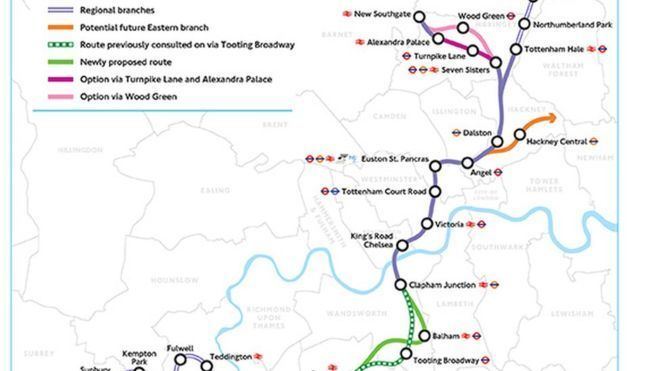
The project was earlier known as the Chelsea–Hackney line (or Chelney line) in reference to a potential route. The plan for a line on this alignment has existed in various forms since 1970.
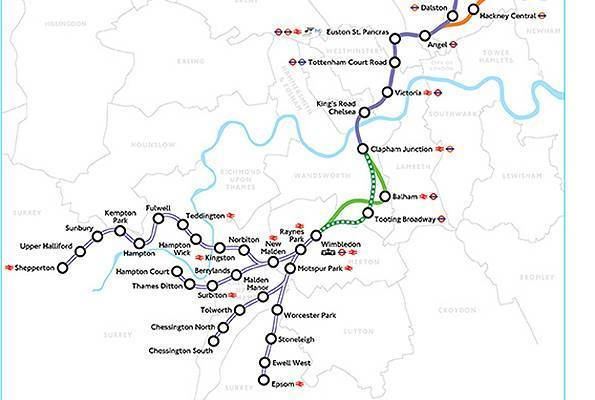
Crossrail 2 connecting jobs homes and opportunities
Current plans
This route is from the 2015 public consultation.
Core section
Operating in new underground tunnels at 30 trains per hour (in each direction):
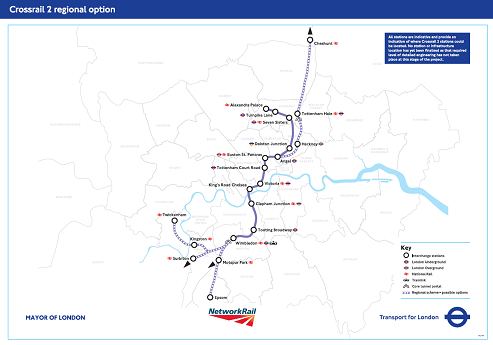
double-ended station serving Euston, King's Cross and St. Pancras mainline stations and the Underground's Euston, Euston Square and King's Cross St Pancras stations
Also in new tunnels, connected to a junction north of Dalston, at 10 and 15 trains per hour:
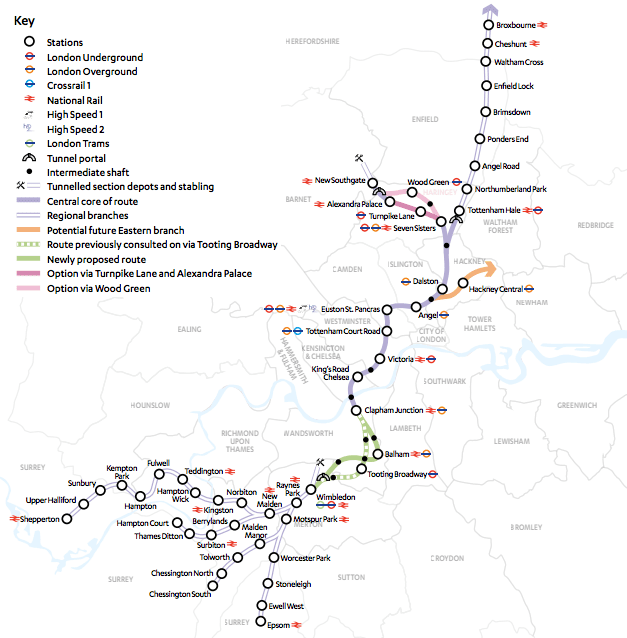
Northern Regional section

Running at between 10 and 15 trains per hour on new rails above ground, connected to a junction north of Dalston:
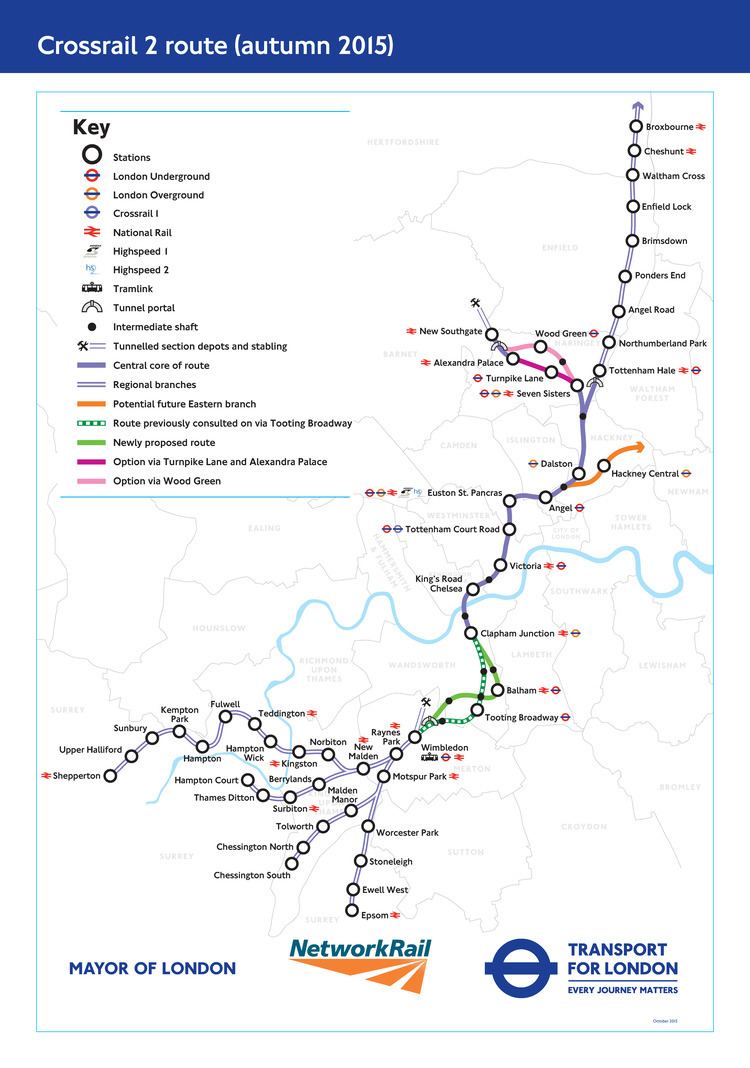
Tottenham Hale (West Anglia Main Line, Lea Valley Lines) all stations to Broxbourne for Crossrail 2 services and Cheshunt .
The 2015 consultation shows "potential future Eastern Branch"
South West section
Above ground - after portal to the south of Wimbledon Station - using use of the existing SWML slow lines rails, between 4 and 20 trains per hour, the southern section comprises:
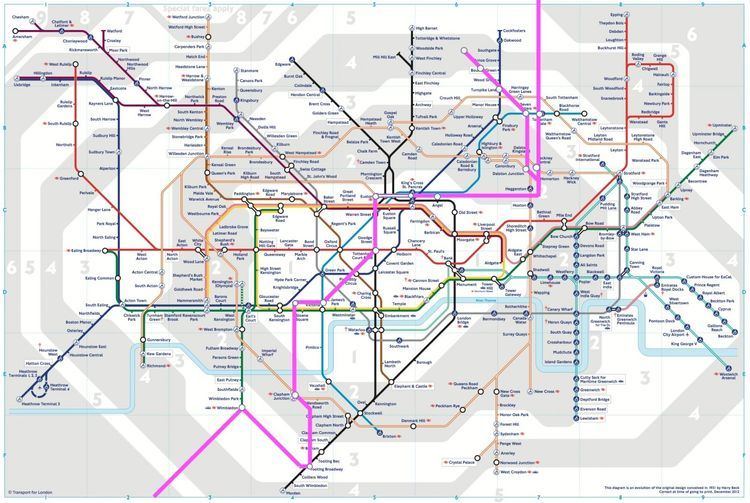
2013 consultation
In May 2013, TfL began public consultation on two potential options:
The results of the consultation were published on 29 November 2013 by TfL and revealed broad support for the Crossrail 2 plans. 96% of respondents supported or strongly supported the plans, whilst 2% opposed or strongly opposed them. The regional route had greater support than the metro route, with 84% of respondents supporting or strongly supporting the regional route versus 73% for the metro plans.
The greatest level of opposition to the principle of Crossrail 2 came from the residents of Kensington and Chelsea, the only area with greater than 5% of respondents (16%) who strongly opposed the scheme. Nearly 20% of respondents from this area either opposed or strongly opposed the scheme, views that did not exceed 10% in any other areas.
2014 consultation
In June 2014, a consultation on small modifications to the 2013 proposals started. Broadly the changes proposed fell into three areas, extending the Alexandra Palace branch to New Southgate, relocation or removal of the Chelsea station, and moving the point at which the two northern branches diverged to beyond either Dalston Junction or Hackney Downs station, calling at only one of these two stations.
2015 consultation
A further consultation was launched in October 2015. In October 2015, the route was changed from Tooting Broadway as a stop to Balham for direct links to railway services and it is proposed now that Crossrail services will not call to Twickenham via Strawberry Hill. The 2015 consultation has a new "pink route" option bypassing Turnpike Lane and Alexandra Palace and going via Wood Green to support "Haringey’s aspiration for the redevelopment of Wood Green High Street .. situated in the main retail area of Wood Green with access to shops, leisure and services".
See consultations.tfl.gov.uk/crossrail2/october2015
Surrey County Council has since called for TFL to consider extending the branch lines to Dorking and Woking stations.
Cost and funding
The cost of the scheme has been estimated at £27–32 billion, in 2014 prices and including the cost of new trains and Network Rail works.
History
A west/north-east tube line was originally planned as early as 1901 and a Bill was put before Parliament in 1904. However, political manoeuvring by rival tube magnate Charles Yerkes ended the proposal.
1970s
A west to north-east line was proposed in 1970 by the London Transport Board's London Rail Study as the next project after the completion of the Victoria line and the Fleet line (now the Jubilee line). Designed to relieve pressure on the District, Central and Victoria lines and to link two areas without tube services, the route would have taken over the Wimbledon branch of the District as far as Parsons Green, then followed a new underground alignment to Leytonstone, where it would then take over one of the branches of the Central line. For financial reasons the line was not built, but the idea has remained.
1990s
In 1995, an alternative Express Metro plan was put forward that would utilise more existing track, have fewer stations and be built to National Rail standards. It would take one of three routes from East Putney on the District line to Victoria; either Putney Bridge, Parsons Green and Chelsea or King's Road as in the original safeguarded plan; or to Wandsworth Town and Clapham Junction and then via Chelsea Harbour and King's Road or via Battersea.
2000s
The London East West Study in 2000 considered Crossrail, the Chelsea–Hackney line and a combination of the two, from Wimbledon to Tottenham Court Road and then to Liverpool Street. The Study supposes main-line gauge, and would omit a station at Piccadilly Circus. Its version of the Chelsea-Hackney Regional Metro splits in the north, with one branch via Dalston taking over the Epping branch of the Central line, the other to Finsbury Park, then using the disused alignment of the Northern Heights plan, taking over the High Barnet branch of the Northern line. The Express Metro option would run on the East Coast Main Line.
In 2007 Crossrail was given the go-ahead over the Chelsea–Hackney line despite some commentators favouring the latter putting implementation after Crossrail's completion date of 2018. The Chelsea–Hackney plans were taken over by Crossrail as Crossrail 2.
In 2007, the 1991 route was updated – Sloane Square was dropped and the Central line's Epping branch from Leytonstone was re-safeguarded. Due to objections from residents of Sloane Square, it was reinstated the following year. South West Trains' Wimbledon depot was safeguarded as a depot for the line. The safeguarding was enlarged from tube gauge to Network Rail loading gauge as it became clear that larger and longer trains would be needed. Of the three routes proposed for south-west London the Royal Borough of Kensington and Chelsea initially favoured one going south via Imperial Wharf to Clapham Junction, but now supports the takeover of the District line's Wimbledon branch. Under these present plans, only one entirely new station would be constructed, at Chelsea.
2008 safeguarded route
A route for the line was safeguarded (legally protected from conflicting development) in 2008. It linked the District line's Wimbledon branch with the Central line's Epping branch via Parsons Green, Chelsea, Sloane Square, Victoria, Piccadilly Circus, Tottenham Court Road, King's Cross St. Pancras, Angel, Essex Road, Dalston Junction, Hackney Central, Homerton and Leytonstone. The safeguarding also includes a spur from Victoria under the Thames to Battersea Park for stabling and access to a tunnelling site. The safeguarded route was reviewed by the Department for Transport in 2013.
Northern and southern destinations
Network Rail's July 2011 RUS for London and the South East supports the existing safeguarded route but speculates about possible modifications in addition to re-routing via Euston. To the south, it suggests that the tunnels should go from Victoria via Clapham Junction to beyond Wimbledon, instead of surfacing near Parsons Green and taking over the District line from there to Wimbledon. To the north, it suggests that the West Anglia corridor would be a better destination than a branch of the Central line. These suggestions are driven by what the RUS sees as the need for extra capacity on the South Western Main Line and the West Anglia corridor. With the planned terminus of HS2 at Euston, Chelsea–Hackney was put back to the top of the agenda for new lines, diverted via Euston.
The London and South East second generation RUS by Network Rail proposed some changes to the safeguarded route: serving Clapham Junction rather than the Wimbledon branch of the District line, not serving Sloane Square, and serving Euston as well as King's Cross St. Pancras. The RUS was also open to changes north of Hackney Central and branches south of Clapham Junction, both of which were seen as later phases.
TfL responded by releasing its preferred options - an automatic metro and a regional scheme:
In July 2015 it was announced that Surrey County Council had launched a study to see if the train line could be extended from Surbiton out to Woking via Walton-on-Thames and Weybridge, and adding a route from Surbiton and Guildford serving places like Oxshott and Horsley, using the existing South West mainline.
Both TfL routes signify a change of thinking at both ends of the route, with serving Clapham Junction more of a priority than relieving the District line, and relieving the Victoria line at its northern end more than the Central line. The regional option, as well as relieving the South Western Main Line, seeks to relieve congested sections of the Northern line and Piccadilly line by removing passengers from the far ends of the lines.
In February 2013, business group London First's Crossrail taskforce (chaired by former Secretary of State for Transport Andrew Adonis) published its recommendations [1] on Crossrail 2, favouring a route almost identical to the regional option above. Later the same day, Network Rail endorsed the plans.
In March 2016, the National Infrastructure Commission said that Crossrail 2 should be taken forward "as a priority" and recommended that a bill should pass through Parliament by 2019 with the line opening by 2033.
Controversy
In 2014, Transport for London announced that the site of the art-house Curzon cinema in Soho had been identified as an area that "may be required to enable the construction of a Crossrail 2 ticket hall" and that "plans for the above site redevelopment may include a replacement cinema". In 2015, celebrities such as Benedict Cumberbatch and Stephen Fry protested against its redevelopment as part of the "Save Soho" campaign group, chaired by Fry. Fry called the development "deeply worrying". Film director Leslie Hardcastle also raised concerns about a local pub. Other film directors and producers, such as Guy Hamilton and Colin Vaines have also joined the campaign.
There is a campaign in Chelsea against the proposed King's Road station.
The current plans for Wimbledon Station involve the demolition of large parts of Wimbledon town centre, including the Centre Court shopping centre. This has attracted significant concern from locals, and Merton Council has issued a 7-page cross-party objection to the current plans.
